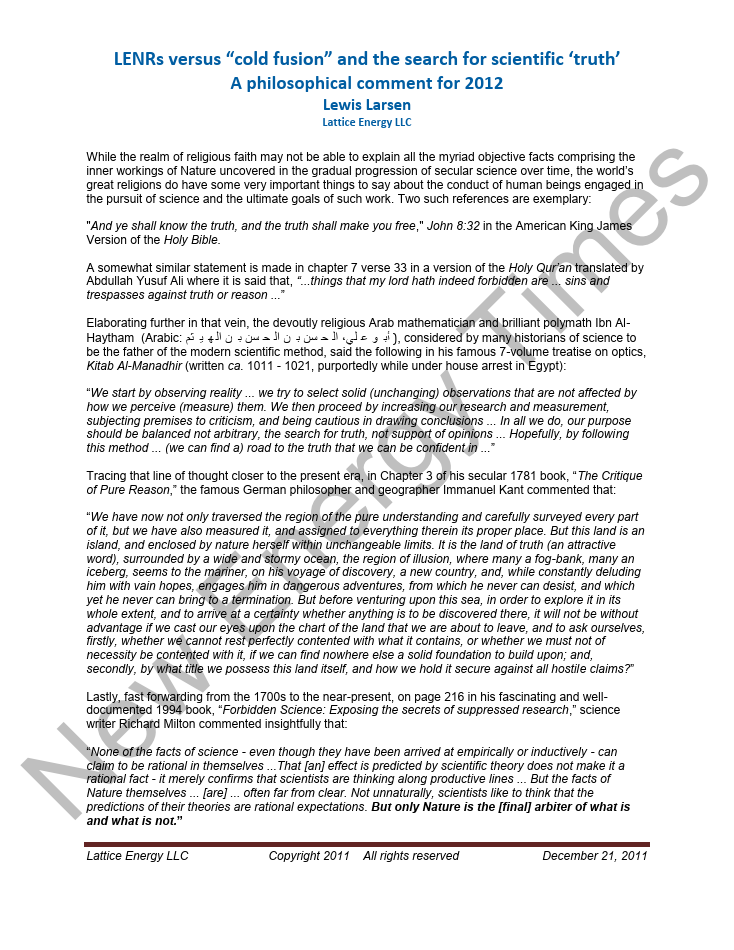To whom it may concern,
In 2010, I conducted an investigation of the EPRI-funded SRI International experiment “M4,” performed by Michael McKubre and staff, and I published my findings. I also provided them to the federal intelligence community.
My conclusions are that, starting in 2000, McKubre began retroactively to manipulate and fabricate data that was associated with M4. He did so without presenting scientific support and without disclosing his changes to the public or to his sponsor, the Electric Power Research Institute. New Energy Times provided McKubre with multiple opportunities to respond to the investigation. Many questions remain unanswered. Please see the summary slides, questions and, where known, answers from McKubre below.
Our collection of our reports, research and records on this matter at this Web address:
http://newenergytimes.com/v2/sr/McKubreM4/McKubre-Experiment-M4.shtml
I have also asked SRI International as well as EPRI if they are willing to perform an independent investigation and release their conclusions, as well.
Steven Krivit
Editor, New Energy Times
(310) 470-8189


